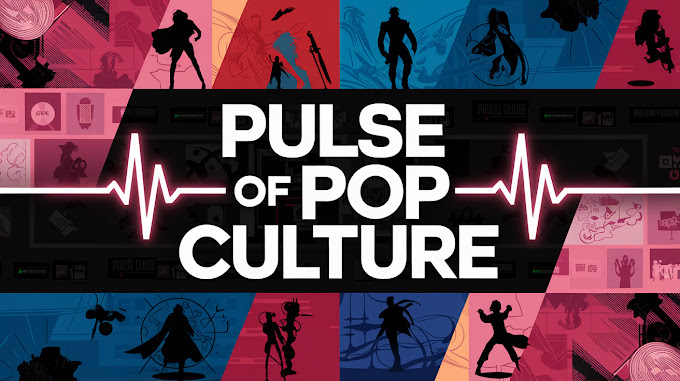In the world of entertainment, anime stands out as one of Japan’s most unique and influential exports. What began as a niche form of animation has blossomed into a global phenomenon, captivating audiences with its compelling stories, intricate art, and rich character development. Yet, anime is much more than just animated entertainment; it is a mirror that reflects Japan's culture, traditions, and values. Through the lens of anime, viewers are offered a glimpse into the customs, history, and societal nuances of Japan.
In this blog, we'll explore how anime serves as both a reflection of Japanese culture and a medium that shapes perceptions of Japan worldwide.
Anime as a Cultural Ambassador
One of the most striking aspects of anime is how it weaves traditional Japanese culture into its narratives. From everyday customs to the spiritual and philosophical roots of Shinto and Buddhism, anime often showcases cultural details that reveal a deeper understanding of Japan’s societal structure.
Festivals and Traditions
In anime, traditional festivals such as Tanabata, Obon, and New Year's celebrations are frequently depicted, immersing the audience in the country’s vibrant cultural heritage. Many series highlight these festivities as central events where characters engage in family activities, visit shrines, and participate in rituals that are integral to Japanese life. Through these scenes, viewers not only gain knowledge of Japanese festivals but also witness the importance of community, family bonds, and spirituality in Japan’s daily life.
Traditional Values and Relationships
Themes like honor, duty, and respect for elders are common in anime. These values reflect bushido, the samurai code of conduct, as well as Confucian ideals deeply embedded in Japanese society. Anime often portrays characters struggling to balance personal desires with societal expectations—showing a cultural focus on collectivism rather than individualism. Shows like Naruto and My Hero Academia exemplify how sacrifice and duty to others are celebrated and respected, mirroring the Japanese emphasis on group harmony and responsibility.
Anime's Exploration of Spirituality
Anime frequently dives into Japan’s spiritual landscape, particularly through elements of Shintoism and Buddhism. Many series incorporate spirits, gods (kami), and supernatural beings into their plots, reflecting Japan’s belief in the presence of spirits in nature. Studio Ghibli’s Spirited Away is a perfect example, where the lead character, Chihiro, encounters various deities and spirits in a mystical bathhouse, teaching viewers about the reverence for nature and spirituality deeply ingrained in Japanese tradition.
Shinto Influence
Shintoism, Japan’s indigenous belief system, is often portrayed through shrines, rituals, and the spiritual respect for nature. Anime like Inuyasha and Noragami incorporate these elements by having characters interact with shrines, gods, and supernatural phenomena that are directly tied to Shinto practices. Such anime give insight into how the Japanese view the world around them—living in harmony with nature and acknowledging a spiritual presence in everyday life.
Buddhist Philosophy
Buddhist ideas of reincarnation, karma, and mindfulness are also woven into many anime storylines. Titles such as Fullmetal Alchemist and Mushi-shi reflect these philosophical underpinnings, where characters face moral dilemmas, the consequences of their actions, and the cyclical nature of life and death. By doing so, anime offers a space to explore complex existential and ethical questions through the lens of Eastern thought.
The Reflection of Contemporary Japanese Society
Beyond traditional aspects, anime also portrays modern-day Japan, capturing the nation’s contemporary culture, challenges, and aspirations. From bustling urban settings to school life, anime often reflects the fast-paced, technologically advanced nature of present-day Japan while addressing social issues like isolation, work culture, and the pressure to succeed.
Education and School Life
Many anime focus on school as a major setting, mirroring the importance of education in Japanese society. Series like Your Lie in April and Assassination Classroom dive deep into the pressures faced by students—academically and socially—highlighting the competitive nature of the Japanese education system. These depictions allow international audiences to understand the emphasis placed on hard work, discipline, and the collective experience of growing up in Japan.
Urbanization and Technology
In anime, Japan’s urban landscapes, like Tokyo, are often depicted as futuristic and bustling, as seen in Ghost in the Shell and Akira. These visions reflect Japan's role as a global leader in technology and innovation, but they also question the human cost of modernization. Themes like the isolation brought on by technology and the loss of traditional values often appear in such anime, creating a tension between Japan’s rich history and its modern identity.
Anime as Cultural Bridge and Shaper
Anime not only reflects Japanese culture but also plays a role in shaping how the world views Japan. As it spreads globally, it introduces audiences to Japan’s unique customs, history, and societal norms in an accessible and entertaining way. For many fans, anime becomes an entry point into learning about Japanese language, food, and travel, creating a cultural bridge that fosters appreciation and understanding across borders.
Shaping International Perceptions
With anime's worldwide popularity, series like One Piece, Dragon Ball, and Attack on Titan have introduced millions to Japanese art forms, values, and even social issues. This has led to an increase in interest in Japan, whether through tourism, language learning, or cultural studies, making anime a powerful tool for cultural exchange.
Global Influence
At the same time, anime’s international appeal influences how Japanese creators shape their work, leading to a fusion of global styles, themes, and storytelling techniques. This cultural exchange creates a dynamic relationship between Japan and the world, where anime serves both as a window into Japan and as a platform for global dialogue.
Conclusion
Anime, while often seen as mere entertainment, is a profound representation of Japanese culture and values. From its depictions of traditional festivals and spiritual beliefs to its exploration of modern societal challenges, anime provides an in-depth look at the essence of Japan. For both Japanese and international audiences, it serves as a bridge between cultures, a lens through which the world can better understand the richness and complexity of Japan’s traditions and its evolving identity in a globalized world.
In this way, anime goes beyond its colorful characters and exciting plotlines—it becomes a gateway to experiencing and appreciating the heart of Japanese culture.

.jpg)

.jpg)

.jpg)
No comments:
Post a Comment